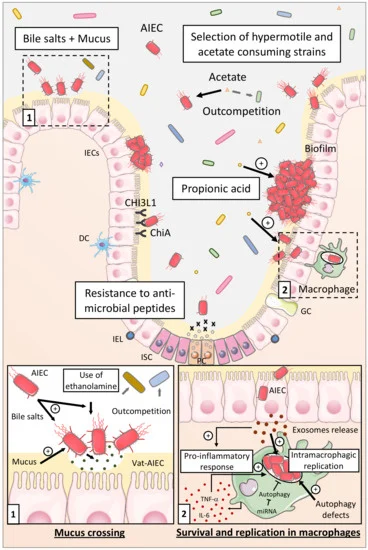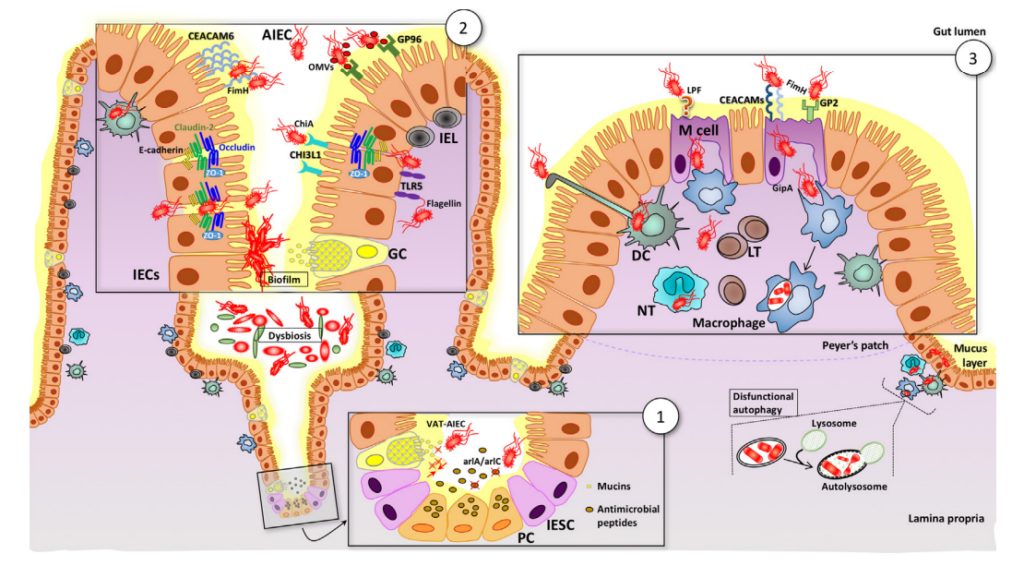Address
14 -7311 Minoru Blvd
Richmond, BC, Canada V6Y3P3
Work Hours
Monday to Friday: 7AM - 7PM
Weekend: 10AM - 5PM
Address
14 -7311 Minoru Blvd
Richmond, BC, Canada V6Y3P3
Work Hours
Monday to Friday: 7AM - 7PM
Weekend: 10AM - 5PM

Adherent-Invasive Escherichia coli (AIEC) in Inflammatory Bowel Disease and Targeted Therapies
Inflammatory bowel disease (IBD), encompassing Crohn’s disease and ulcerative colitis, is a chronic inflammatory condition of the gastrointestinal tract. While the exact causes of IBD remain elusive, research has increasingly highlighted the role of Adherent-Invasive Escherichia coli (AIEC) in the pathogenesis of this debilitating condition. Understanding how AIEC contributes to IBD and exploring targeted therapies to mitigate its impact could revolutionize treatment strategies and improve patient outcomes.
Adherent-Invasive Escherichia coli (AIEC) is a pathogenic strain of E. coli that is not typically found in the healthy gut microbiota but is frequently identified in the intestinal mucosa of IBD patients. Key characteristics of AIEC include:
The ability of AIEC to thrive in the inflammatory gut environment makes it a central player in the progression of IBD.
Adherent-Invasive Escherichia coli AIEC’s unique pathogenic mechanisms directly contribute to the symptoms and severity of IBD:

Adherent-Invasive Escherichia coli (AIEC) is resistant to many conventional treatments, including broad-spectrum antibiotics, due to its ability to persist within host cells and its low susceptibility to immune responses. Furthermore, traditional therapies targeting general inflammation may not address the specific role of AIEC in disease progression.
Advances in microbiology and immunology have led to the development of innovative therapies specifically targeting Adherent-Invasive Escherichia coli (AIEC). These include:
Maintaining a healthy gut microbiome is essential for preventing AIEC overgrowth and mitigating its impact. Strategies include:
Natriviga’s 5-in-1 Probiotics offer a comprehensive solution for supporting gut health in IBD patients. Formulated with 31 strains of beneficial bacteria, prebiotics, and essential vitamins, this product:
By incorporating Natriviga Probiotics into your routine, you can take proactive steps to manage IBD and improve overall gut health. Explore Natriviga’s Probiotics to learn more.
Adherent-Invasive Escherichia coli (AIEC) represents a significant challenge in the management of IBD, but targeted therapies and gut health strategies provide hope for more effective treatments. By addressing the specific mechanisms of AIEC and restoring microbial balance, patients can achieve better symptom control and improved quality of life. Whether through cutting-edge therapies like hyperimmune IgY or supportive measures like probiotics, prioritizing gut health is essential for overcoming the challenges of IBD.